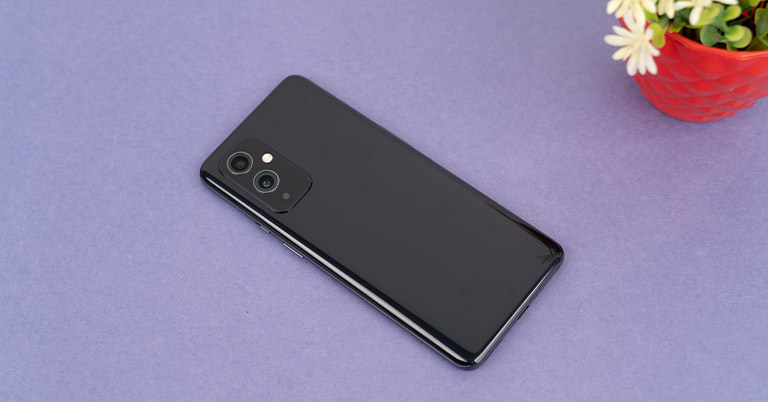
Here, I am going to be sharing our long-term review of the OnePlus 9. While I’ve been busy testing so many midrange phones that have launched in 2021 so far, one of our team members who is also a OnePlus enthusiast was tasked with using the OnePlus 9 as his daily driver for 2 months. Okay, let’s get into it.
OnePlus 9 Specifications:
- Body: 74.2 x 160 x 8.7mm, 192 gm, Corning Gorilla Glass 5
- Display: 6.55-inches Fluid AMOLED, 120Hz Refresh Rate, 240Hz touch sampling rate, 1100 nits, HDR10+, Corning Gorilla Glass 5
- Resolution: FHD+ (2400 x 1080 pixels), 20:9 aspect ratio, 402 PPI
- Chipset: Qualcomm Snapdragon 888 5G (5nm Mobile Platform)
- CPU: Octa-core (1×2.84 GHz Kryo 680 & 3×2.42 GHz Kryo 680 & 4×1.80 GHz Kryo 680)
- GPU: Adreno 660
- Memory: 8/12GB LPDDR5 RAM, 128/256GB UFS 3.1 storage (fixed)
- Software & UI: Android 11 with OxygenOS 11 on top
- Rear Camera: Triple-camera;
– 48MP, f/1.8 Sony IMX689 primary sensor
– 50MP, f/2.2 Sony IMX766 ultra-wide, freeform lens
– 2MP, f/2.4 monochrome lens - Front Camera: 16MP f/2.4 Sony IMX471 sensor (punch-hole)
- Audio: Dual stereo speakers, Noise cancellation, Dolby Atmos
- Security: Optical in-display fingerprint sensor, Face unlock
- Sensors: Accelerometer, Electronic Compass, Gyroscope, Ambient Light, Proximity, Sensor Core, Flick-detect
- Connectivity: Dual-SIM (Nano), WiFi 802.11 a/b/g/n/ac/ax (Dual-band), Bluetooth 5.2, GPS / AGPS / Glonass / Galileo / Beidou, USB Type-C, NFC, 4G LTE, 5G
- Battery: 4500mAh with 65W fast charge (15W wireless charging)
- Color options: Winter Mist, Arctic Sky, Astral Black
- Price in Nepal: Rs. 104,999 (12/256GB)
OnePlus 9 Review:
Performance
- Octa-core Qualcomm Snapdragon 888 5G SoC (5nm)
- 8/12GB LPDDR5 RAM, 128/256GB UFS 3.1 storage (fixed)
- Android 11 with OnePlus’ OxygenOS 11 on top
Okay, let’s start with the performance side of things. As expected, the company has not made any compromises here compared to the more expensive OnePlus 9 Pro.
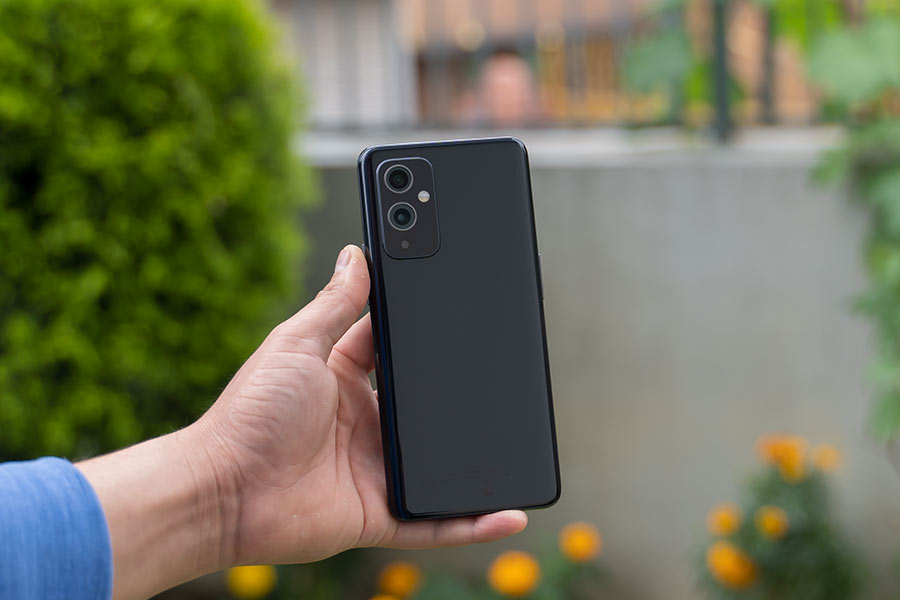
Hence, it delivers as good a smartphone experience as relatively more expensive devices. Yet it feels like OnePlus has cheaped out a little bit in terms of the vibration motor as its haptics is not as good as the 9 Pro. Regardless, we are yet to encounter even the slightest hint of stutter in this Snapdragon 888-powered beast—no matter the intensity of the workload.
Plus, it does not heat up as much as the 9 Pro either. I don’t mean to say the OnePlus 9 stays cool under every condition but I have experienced its cooling solution to be slightly more effective than the 9 Pro while playing games or shooting 4K videos and such.
Gaming experience
Moving on. As with all the other phones with this flagship chipset, the OnePlus 9 is able to handle even the most graphics-intensive titles like Genshin Impact smoothly in the default settings. But, cranking up the settings to 60 fps, the gameplay is still fairly smooth although it introduces few jitters every now and then.
However, the bigger caveat here is that the phone heats up beyond 42-43ºC surface temperature under this. So, we recommend you stick with the default setting in Genshin Impact for a stable and comfortable gaming experience.
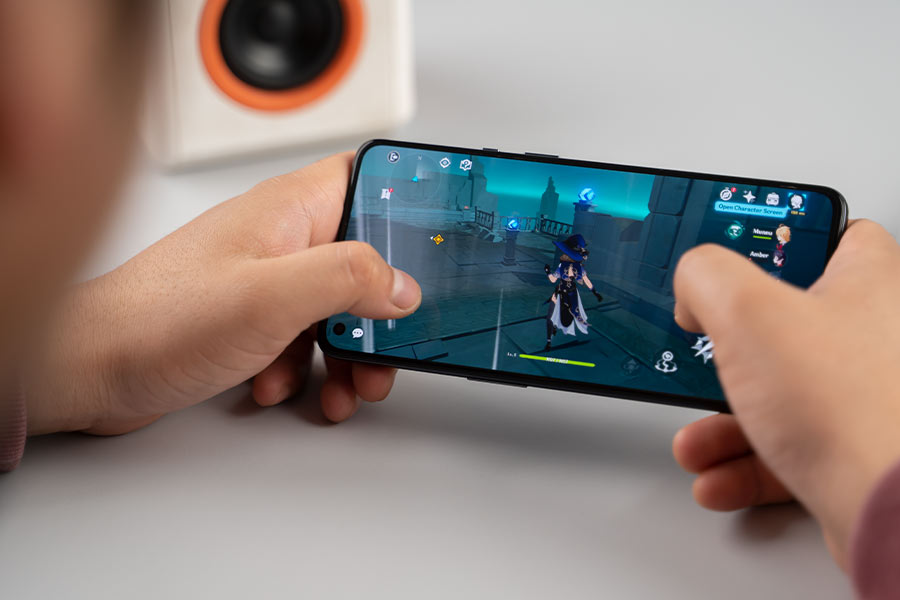
During this review, we also played our fair share of PUBG Mobile on the OnePlus 9. Here, the phone maintained a stable 40 fps in the highest of settings. And thanks to the incredibly low touch latency of 240Hz, the gameplay on this phone is further elevated.
However, to differentiate it from the Pro model, the company has skipped the “Hyper Touch” feature here that can bump the screen’s touch response all the way to 360Hz. Such petty compromises from OnePlus have become so common in the past couple of years that I can’t say I’m surprised.
On top of the discounted touch sampling rate, OnePlus has failed to bring 90fps gameplay in PUBG Mobile on this year’s flagship phones like on the OnePlus 8 series. As a result, the newer models can only hit a maximum of 60fps in extreme frame rates and HDR graphics.
Heating issue?
Plus, as I mentioned earlier, the OnePlus 9 does heat up while gaming. A couple of recent updates have minimized the issue to some extent, but it looks like Snapdragon 888 is the bigger culprit here.
Gaming aside, normal day-to-day task on this 120Hz refresh rate screen has been a great experience. The company’s OxygenOS is really well implemented and we’ve had no issues concerning sluggishness or stutters while scrolling, multitasking, and the likes here.
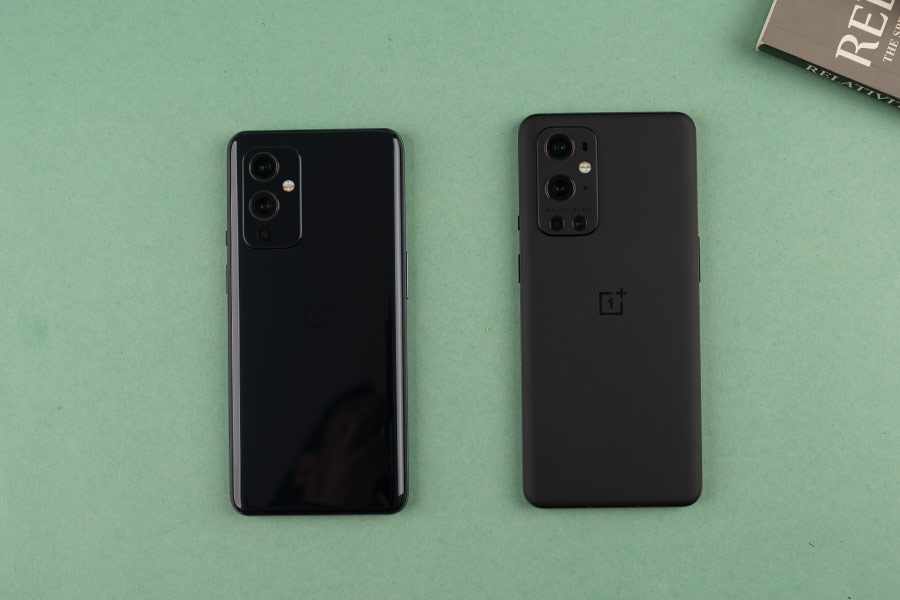
The only thing I am slightly disappointed by is that OnePlus has been pretty slow with monthly updates on its phones since both the OnePlus 9 and 9 Pro are still running on May’s security patch while we’re already halfway past June.
In comparison, Samsung has been doing incredibly well in this regard and I desperately hope OnePlus raises its software update game. Besides this, the company has also made other compromises here.
More compromises
For instance, the Indian variant of the OnePlus 9 only supports two 5G bands at a time when cheaper phones like the Realme X7 Max bring seven 5G bands. To note, the global variant that we have with us supports well over ten 5G bands. I think this regional variation is most likely to keep the prices lower in India since the global variant is 20-25% pricier than what OnePlus 9 costs in India.
Design & Build
- 74.2 x 160 x 8.7mm, 192 grams
- Gorilla Glass 5 (front/back), plastic frames
- No IP certification for dust/water protection
And not to forget that it does not have any IP rating either—well, that’s not entirely accurate. The frustratingly exclusive truth here is that the OnePlus 9 buyers in the US who purchase it from T-Mobile are indeed privy to IP68 certification. And no market else.
On top of this, it comes with plastic frames which I think is yet another letdown considering comparatively affordable phones like iQOO 7 Legend and the Mi 11X Pro brag metal frames.
Now, don’t get me wrong, the OnePlus 9 has a really impressive ergonomic design. It’s handy and with the flat display, we’ve had no issues regarding accidental or ghost touches here either. Also, it’s quite lightweight too. So unlike other bulkier phones, it’s not a struggle using the OnePlus 9 for a longer duration.
Despite all this, if we had to rate its looks, well I would only give it a B+. That’s because the phone does not look and feel like a premium device. Instead, it looks like any other mid-range phone out there, especially this glossy Arctic Black variant that we have. OnePlus seriously could have done so much better in this regard!
Older-gen Gorilla Glass 5
Also, like the 9 Pro, the company has gone with the older-generation Gorilla Glass 5 on the front and back instead of the Gorilla Glass Victus, which is Corning’s latest and greatest offering. Our unit hasn’t suffered from scratches yet, but I think they could have at least settled for the Gorilla Glass 6 if not the Victus.
Display
- 6.55-inches FHD+ Fluid AMOLED display
- 120/240Hz refresh/touch sampling rate
- 1100 nits peak brightness, HDR10+
Anyway, we have little to complain about the display though. While it doesn’t get as bright as that on the 9 Pro, it is bright enough under any kind of harsh lighting situation.
Do note that this 6.55” AMOLED screen is not QHD. Yet, its FHD resolution is still top quality. Plus, with the ever-so-optimized software, we have never faced laggy UI transition or jerky interface, which we’ve frequently encountered on Xiaomi or Realme phones. This is one of the few things great about OnePlus phones!
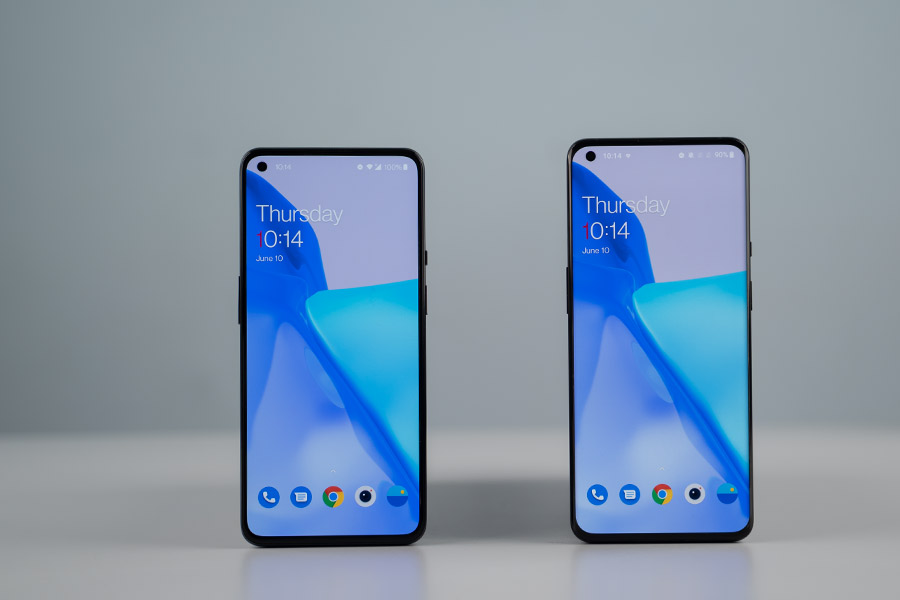
However, it misses out on the DC dimming feature which was present on the OnePlus 8 series. Regardless, watching videos on this phone has been an enjoyable ride. Plus, its stereo speakers are as good as those on the 9 Pro which further adds to the content-consumption experience. They’re loud with really balanced mids and highs.
This AMOLED screen is also house to an optical in-display fingerprint sensor which is expectedly fast and accurate. Still, OnePlus could have placed the sensor a little higher, but over time you will get used to it.
Cameras
- Triple-camera setup at the back
- (48MP main, 50MP ultrawide, 2MP mono)
- 16MP selfie camera (punch-hole cutout)
Alright, now let’s talk about the cameras. I have already emphasized at length on how OnePlus created unnecessary hype around its partnership with popular camera maker Hasselblad in my review of the OnePlus 9 Pro, so I don’t want to beat a dead horse here.
Anyhow, this phone borrows the 48MP Sony IMX689 primary sensor from the 8 Pro. But the good news is that it gets the same 50MP ultra-wide free form lens like the 9 Pro and completing the setup is an underwhelming 2MP monochrome sensor. For this review, we compared the cameras of the OnePlus 9 against those on the 9 Pro.
Normal Images
Now, because the OnePlus 9 introduces the same Hasselblad color calibration, compared to its Pro sibling, normal daytime images look almost similar.
In some instances, the OnePlus 9 has a slightly saturated output but most of the time, you’ll have a difficult time pointing out the differences. The level of detail and dynamic range is pretty similar too.
However, since the phone does not have OIS, there are certain instances when it does not behave well as a point-to-shoot camera should. So, if you are shooting a moving subject, the OnePlus 9 fails to lock focus quickly, thereby resulting in blurred artifacts which is not the case with the OnePlus 9 Pro.
Nighttime Images
Likewise, during nighttime, thanks to the lack of OIS and a slightly inferior sensor, low-light images look muddy and grainy when zoomed in. As evident from these photos, the OnePlus 9 Pro’s normal nighttime shots retain better details and less noise.
With the Nightscape mode turned on, details improve significantly though. Still, most of the time, the OnePlus 9 Pro does a better job.
Wideangle Images
Ultra-wide nighttime images from both phones have similar performance, be it under normal or Nightscape mode.
The daytime ultra-wide photos are also pretty close.
Plus, its free-form lens helps reduce distortion around the edges here. But just like the images from the primary camera, sometimes, it leans a bit more on the saturated side.
Portrait Images
Moving to the portraits, well we’ve liked what OnePlus has done here. The subject focus is nice and edge detection is good as well.
The only difference lies in the skin tone which is a little yellowish on the 9 Pro and pinkish on the OnePlus 9. Regardless of the color tone, both look pretty good in my eyes.
Selfie Images
Selfies from both phones turn out similar too, courtesy of the same 16MP sensor. This is us nitpicking but the OnePlus 9 Pro does maintain highlights slightly better.
Still, there’s nothing much distinguishable in most instances. However, there have been a few occasions when the OnePlus 9 wasn’t able to manage exposure like in this picture here.
Selfie Videos
In terms of selfie videos, well, just like the 9 Pro, this phone can only shoot 30 or 60 fps videos in 1080p resolution. The footages are stable and their quality is decent as well.
But again, with a premium phone like this one, I think OnePlus should have offered higher resolution options as well. Nevertheless, the audio pick-up from the microphone sounds good enough for vlogging and such.
Videography
At the back, its video capabilities are almost identical to the 9 Pro, except for a 4k 120 fps option which is absent here. It still features 8k 30 fps mode though and the quality is almost similar on both phones.
Surprisingly, the 4k 60 fps videos also result in a similar performance, so that’s great. But sometimes, the lack of OIS is dearly missed in dimly lit or low lighting situations where it falls victim to slight jerks while its Pro sibling manages to deliver relatively stable output.

Overall, I must say that the OnePlus 9 is a good camera phone. It is more or less similar to the expensive OnePlus 9 Pro and is far ahead compared to other Snapdragon 888-powered phones like the Mi 11X Pro and the iQOO 7 Legend when it comes to the cameras.
Still, the problem here is that despite the Hasselblad partnership, aspects like inferior color, shadow processing, and inconsistency across lenses are still prevalent. Even after more than 2 months of the release of these phones, OnePlus has failed to fix these issues.
Battery
- 4500mAh battery with 65W fast charging
So, what did we miss? Hmm, oh yeah, the battery. Under a typical usage with the refresh rate set to 120Hz at all times and the Ambient display turned on, we managed to squeeze out just 5 hours of screen-on time throughout the review period from the 4500mAh battery of the OnePlus 9. This translates to less than a day’s endurance for me. And that’s strictly average battery life in my books.

One of the reasons for this could also be from the lack of LTPO backplane technology. You see, unlike the Pro variant, the OnePlus 9 can’t dynamically toggle between the screen’s refresh rate between 1 to 120Hz.
What this ultimately means is that the screen is unnecessarily taking up more power even when you’re interacting with static content—compared to how the 9 Pro can dial it down up to just 1Hz for optimum power consumption.
Also, you will notice quite a significant battery drain with the Ambient display turned on. During our usage, we noticed around 7-10% battery drain overnight. So, if you prioritize battery life more, you should consider turning it off.
Charging speed
But since it supports 65 Watt fast charging like the 9 Pro, the OnePlus 9’s dual 2250mAh cell jumps from 0 to 100% in around 30 minutes only. However, I was quite annoyed to see the phone’s Indian variant losing the wireless charging capability entirely while the global model features a mediocre 15W charging speed. I think they could have at least offered a 30W wireless charging.
Conclusion
Okay, time to wrap up this review of the OnePlus 9. As you might’ve guessed, our verdict on the device is that it’s a pretty good phone for the price and I would probably pick it over the 9 Pro because it’s more value-oriented and that’s what OnePlus is all about.

Having said that, I feel like OnePlus has priced it 10-15% more than what feels justifiable. For instance, the phone lacks OIS, a telephoto lens, LTPO technology, an IP rating, and it has plastic frames. So, because of all this, buyers might be tempted to go with the cheaper alternatives like Mi 11X Pro or the iQOO 7 Legend, which practically offer similar specs as the OnePlus 9.
- Watch our video review of the OnePlus 9.
OnePlus 9 Long-Term Review: Pros & Cons
Pros:
- Excellent, optimized performance
- Ergonomic design language
- Bright, vibrant display quality
- Decent battery life, fast charging
Cons:
- Lacks an official IP certification
- Plastic frames on a premium phone
- Indian variant has only two 5G bands
- Sub-par cameras for a flagship phone







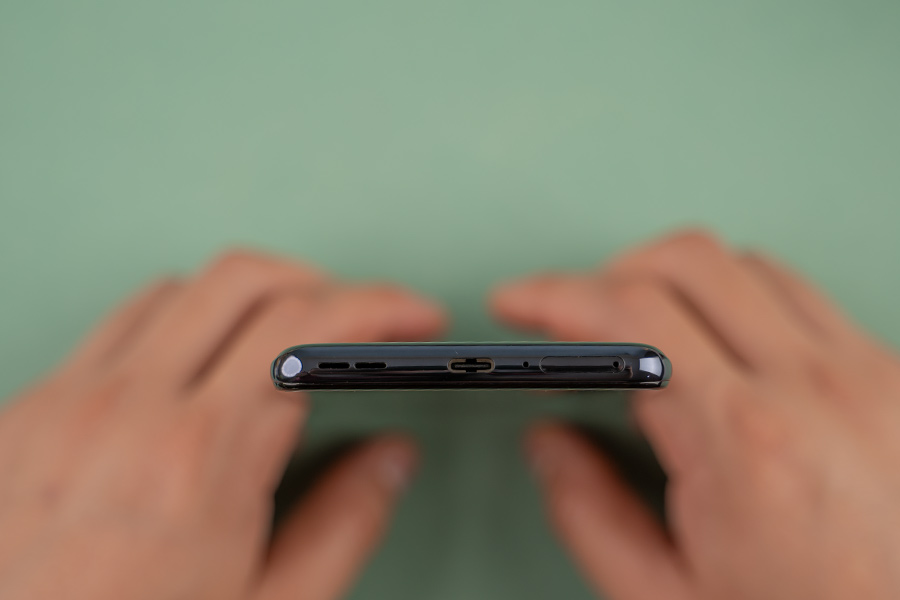
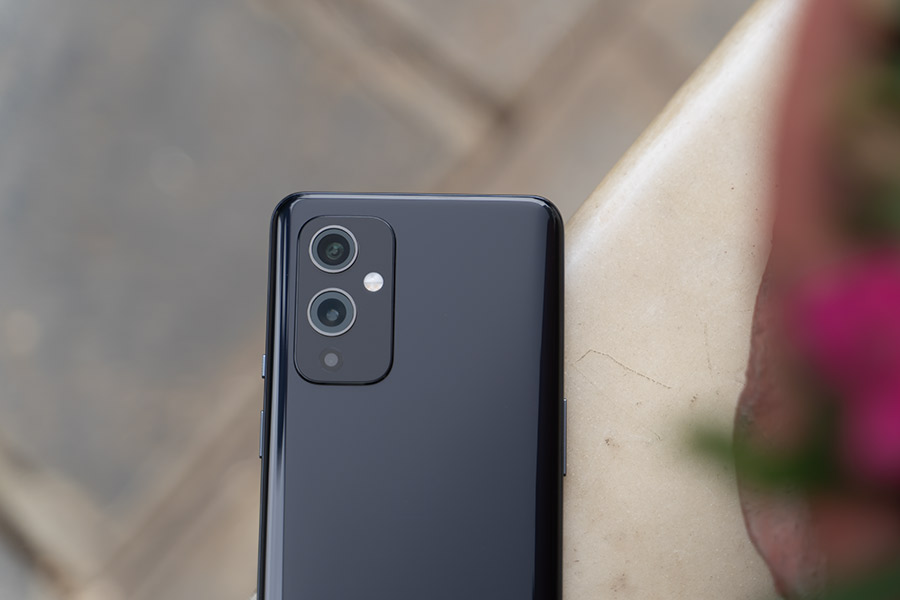
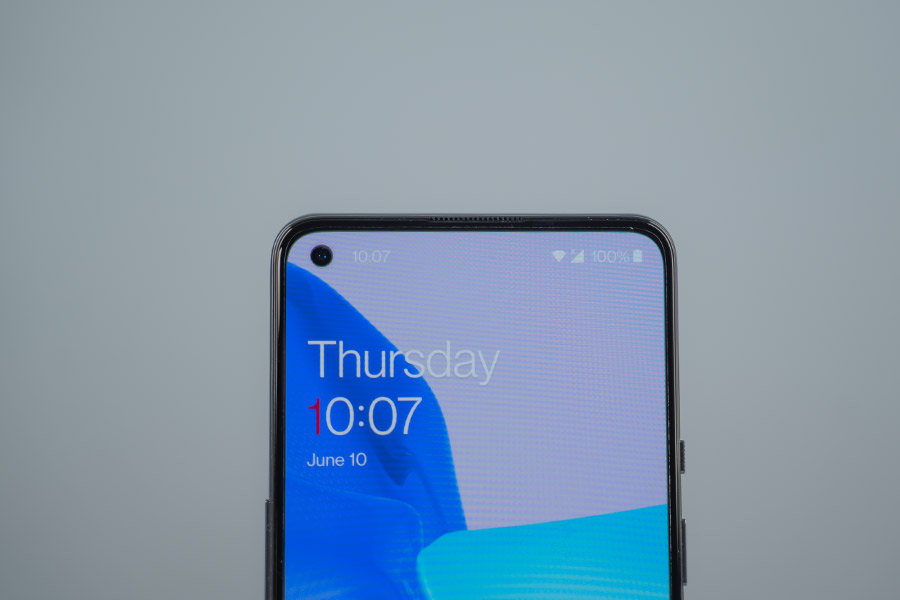



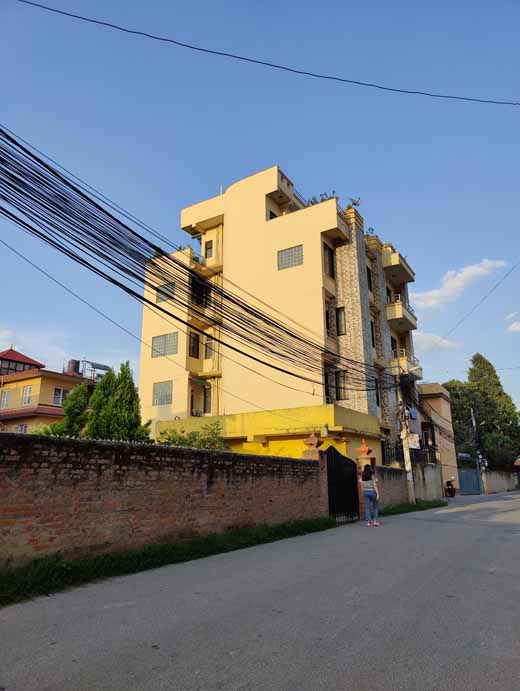
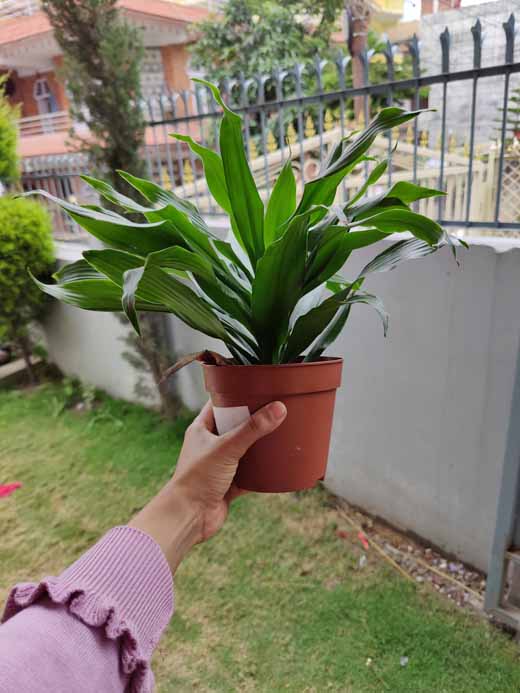
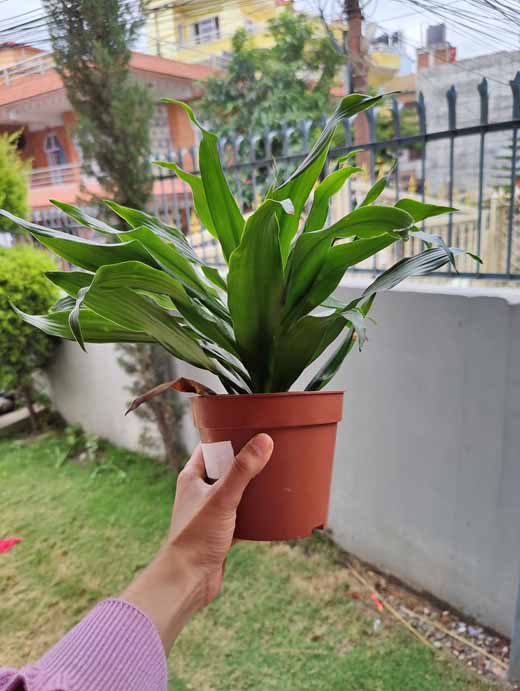
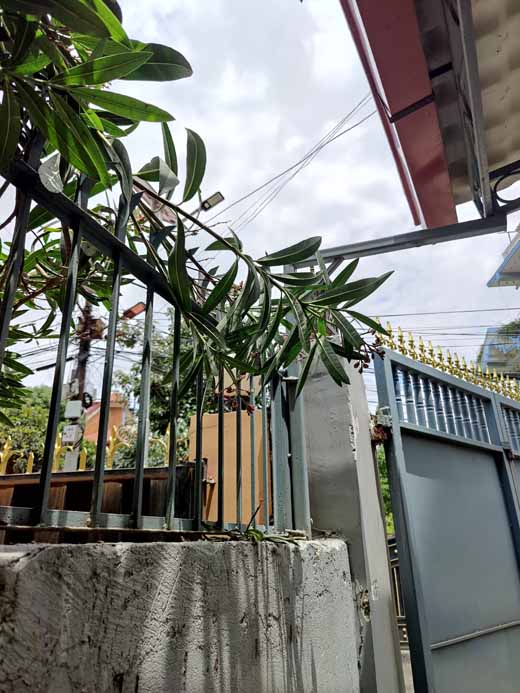
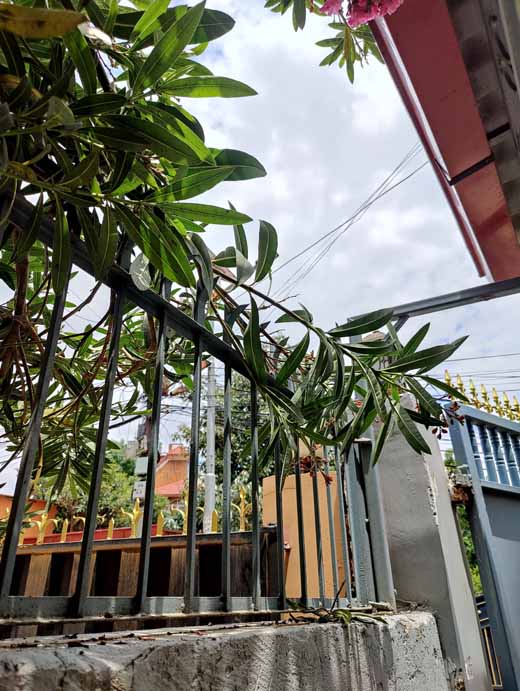
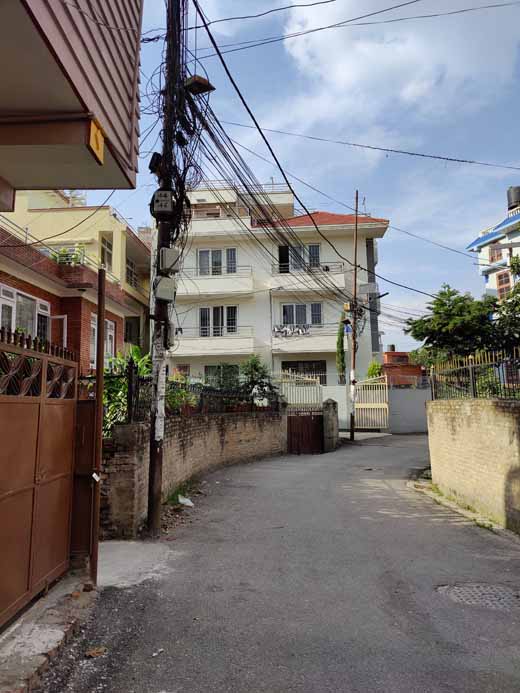








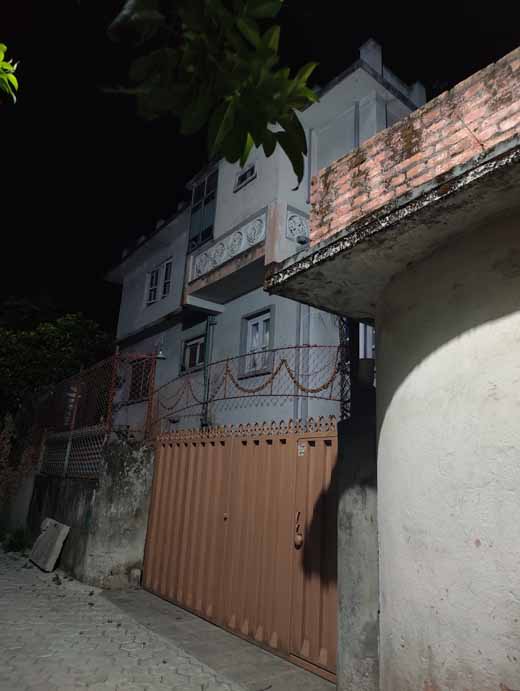
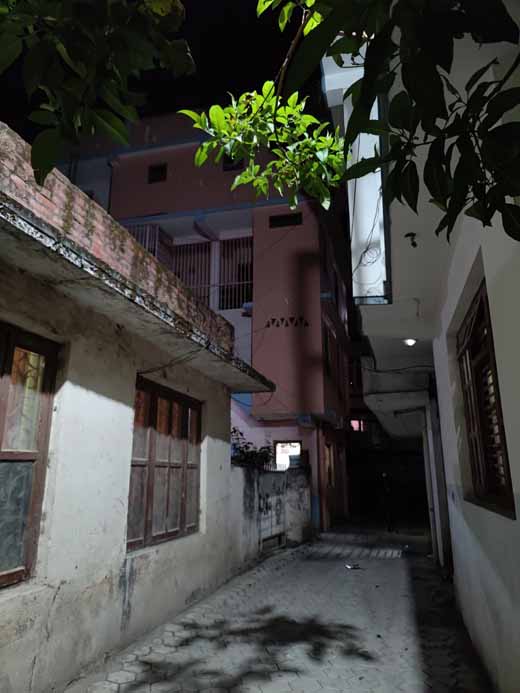

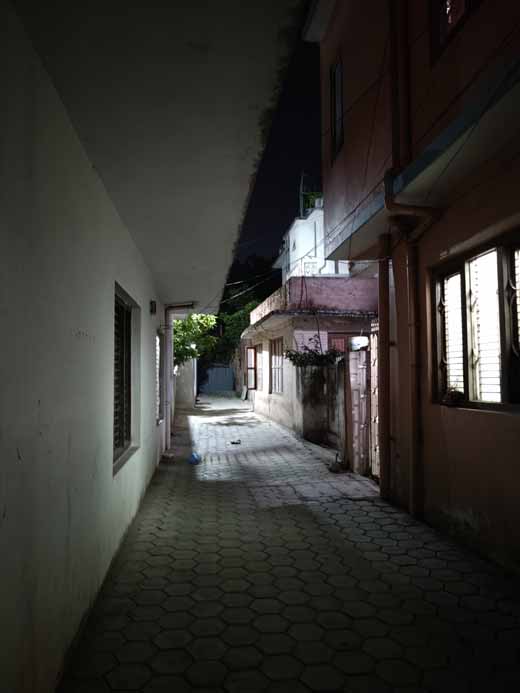

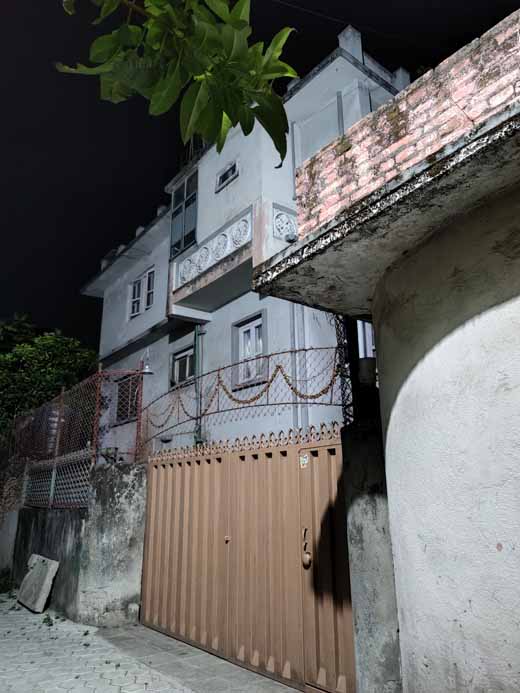

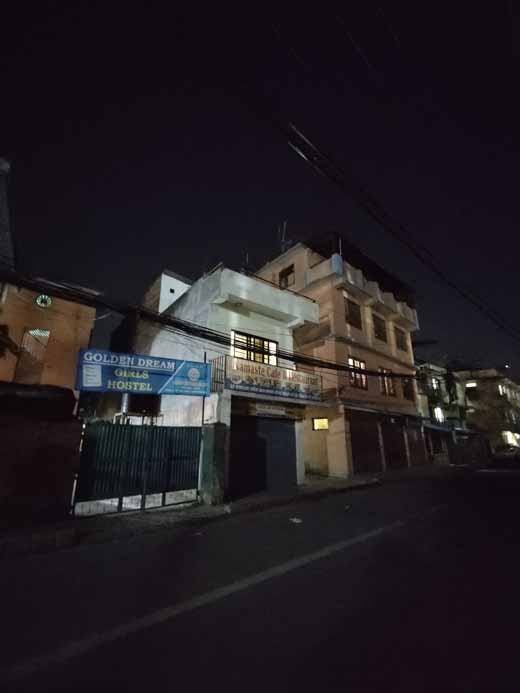



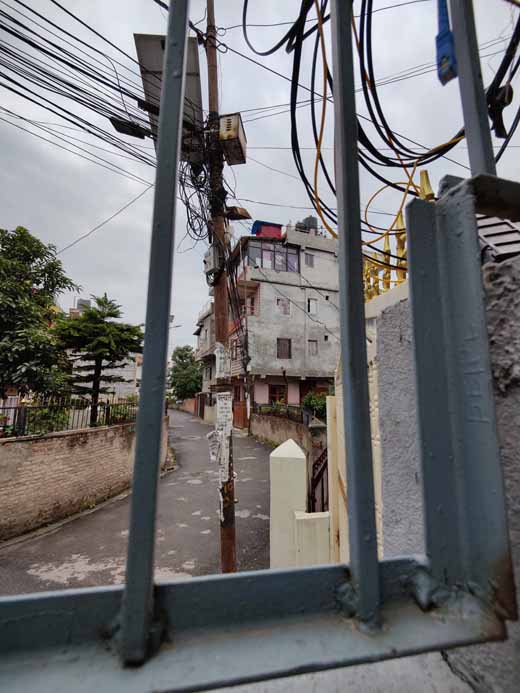
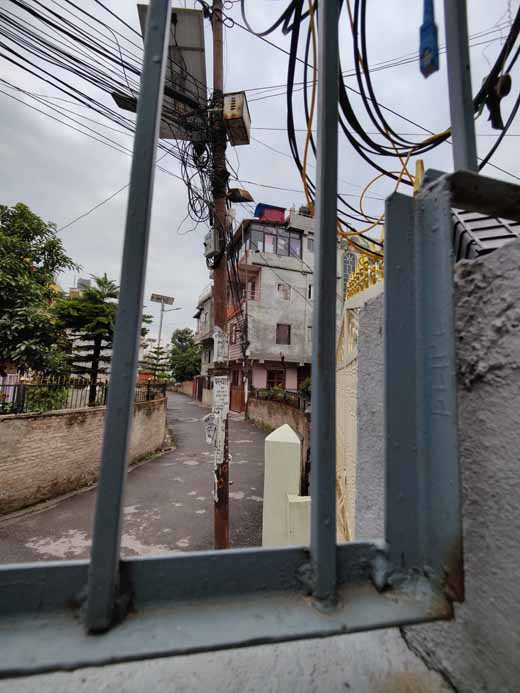
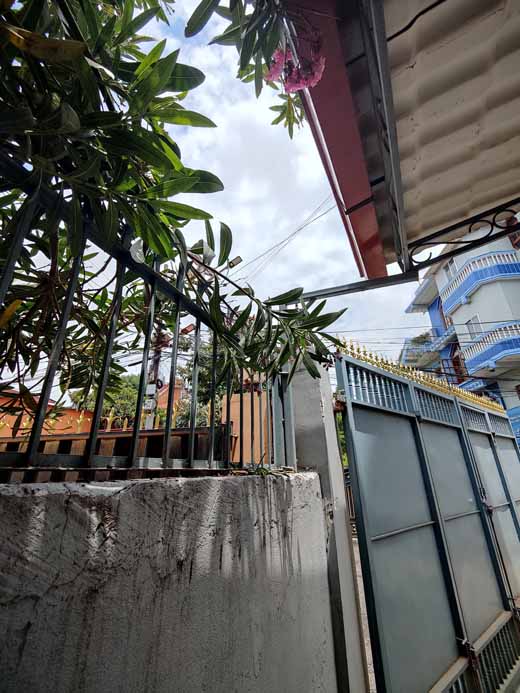

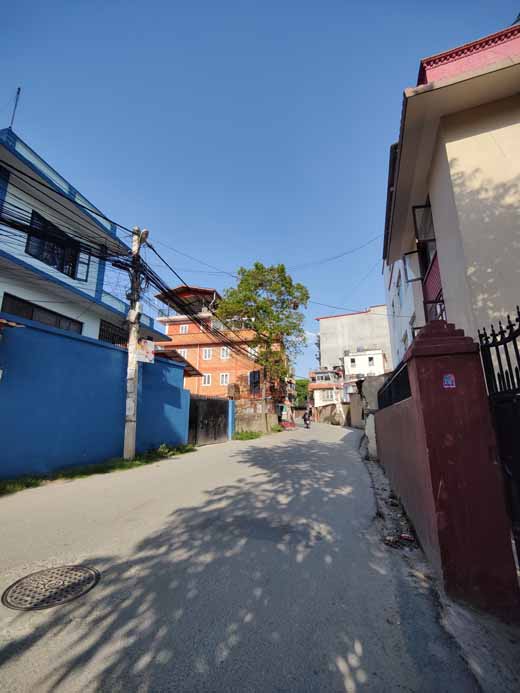
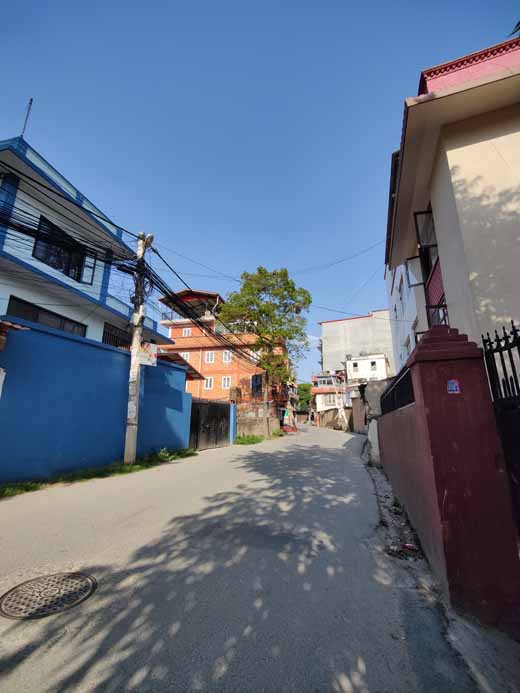











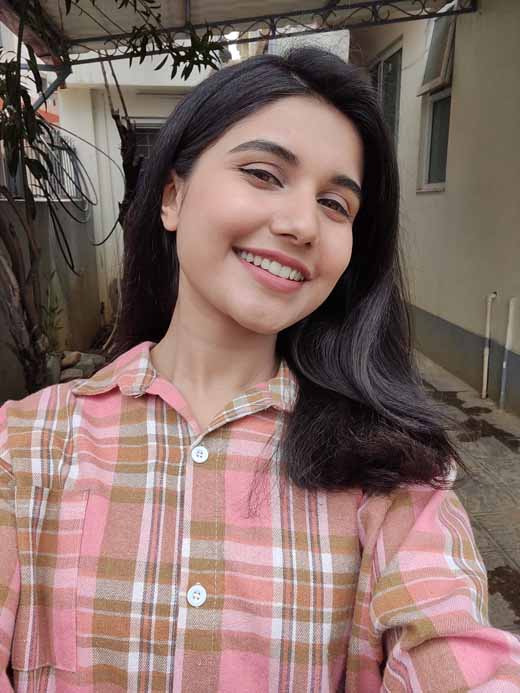





![Best Gaming Laptops in Nepal Under Rs. 250,000 (रु 2.5 Lakhs) [2025] Best Gaming Laptops Under 2.5 lakhs in Nepal [Feb 2025 Update]](https://cdn.gadgetbytenepal.com/wp-content/uploads/2025/02/Best-Gaming-Laptops-Under-2.5-lakhs-in-Nepal-Feb-2025-Update.jpg)
![Best Gaming Laptops in Nepal Under Rs. 120,000 (रु 1.2 Lakhs) [2025] Best Budget Gaming Laptops Under Rs 120000 in Nepal 2025 Update](https://cdn.gadgetbytenepal.com/wp-content/uploads/2025/05/Best-Budget-Gaming-Laptops-Under-Rs-120000-in-Nepal-2024-Update.jpg)
![Best Laptops Under Rs. 80,000 in Nepal [2025] Best Laptops Under 80,000 in Nepal March 2025 Update](https://cdn.gadgetbytenepal.com/wp-content/uploads/2025/03/Best-Laptops-Under-80000-in-Nepal-March-2025-Update.jpg)
![Best Gaming Laptops in Nepal Under Rs. 200,000 (रु 2 Lakhs) [2025] Best gaming lapotp under 2 lakhs Nepal Feb 2025](https://cdn.gadgetbytenepal.com/wp-content/uploads/2025/01/Best-Gaming-Laptops-Under-2-Lakh-Nepal-Feb-2025-Update.jpg)

![Best Mobile Phones Under Rs. 15,000 in Nepal [Updated 2025] Best Phones Under 15000 in Nepal 2024 Budget Smartphones Cheap Affordable](https://cdn.gadgetbytenepal.com/wp-content/uploads/2024/03/Best-Phones-Under-15000-in-Nepal-2024.jpg)
![Best Mobile Phones Under Rs. 20,000 in Nepal [Updated] Best Mobile Phones Under NPR 20000 in Nepal 2023 Updated Samsung Xiaomi Redmi POCO Realme Narzo Benco](https://cdn.gadgetbytenepal.com/wp-content/uploads/2024/01/Best-Phones-Under-20000-in-Nepal-2024.jpg)
![Best Mobile Phones Under Rs. 30,000 in Nepal [Updated 2025] Best Phones Under 30000 in Nepal](https://cdn.gadgetbytenepal.com/wp-content/uploads/2025/01/Best-Phones-Under-30000-in-Nepal.jpg)
![Best Mobile Phones Under Rs. 40,000 in Nepal [Updated 2025] Best Phones Under 40000 in Nepal 2024 Smartphones Mobile Midrange](https://cdn.gadgetbytenepal.com/wp-content/uploads/2024/02/Best-Phones-Under-40000-in-Nepal-2024.jpg)
![Best Mobile Phones Under Rs. 50,000 in Nepal [Updated 2025] Best Phones Under 50000 in Nepal](https://cdn.gadgetbytenepal.com/wp-content/uploads/2025/01/Best-Phones-Under-50000-in-Nepal.jpg)
![Best Flagship Smartphones To Buy In Nepal [Updated] Best flagship phone 2025](https://cdn.gadgetbytenepal.com/wp-content/uploads/2024/07/Best-Flagship-Phones-who-is-it-ft-1.jpg)